Home » Conditions » Skin & hair » Scars
A scar appears as a result of the tissue repair process following a skin lesion. As soon as the dermis is affected (burn, wound, acne), the skin activates a physiological healing mechanism. This process, which begins immediately after trauma, aims to repair the skin tissue in depth and occurs in several stages. Depending on the extent of the lesion, the total duration of healing may range from 1 to 1.5 years.
The healing phases are as follows :
• Coagulation phase : a blood clot forms after bleeding and turns into a scab
• Inflammatory phase or cleansing phase : white blood cells are activated to clean the wound and destroy any foreign bodies in the tissue. This phase manifests as an inflammatory reaction causing possible redness and swelling (edema), and increased temperature in the affected area
• Proliferative phase : the dermis and epidermis begin to rebuild. These new tissues are initially very imperfect
• Remodeling phase : the structure and strength of the scar improve, as does its visual appearance. Gradually, the scar becomes more supple.
The quality of healing varies depending on the size of the lesions, skin quality, and the person’s overall health. Indeed, the skin’s ability to regenerate depends on several factors (age, vascular conditions, nutritional deficiencies, smoking).
When abnormalities affect the healing process, visible and permanent scars form on the affected area. Several techniques in morphological and anti-aging medicine can be used to reduce the appearance of a scar.
Problems such as acne, surgery, burns or accidents can leave marks on the skin of the face or body. These scars, remnants of such events, can cause psychological distress. Surgery is not always necessary to reduce or remove a scar.
There are medical techniques available to remove a scar. These marks, which may be difficult to accept, require customized approaches to be effectively corrected. Available treatments include scar lasers, hyaluronic acid injections, medium and deep peels.
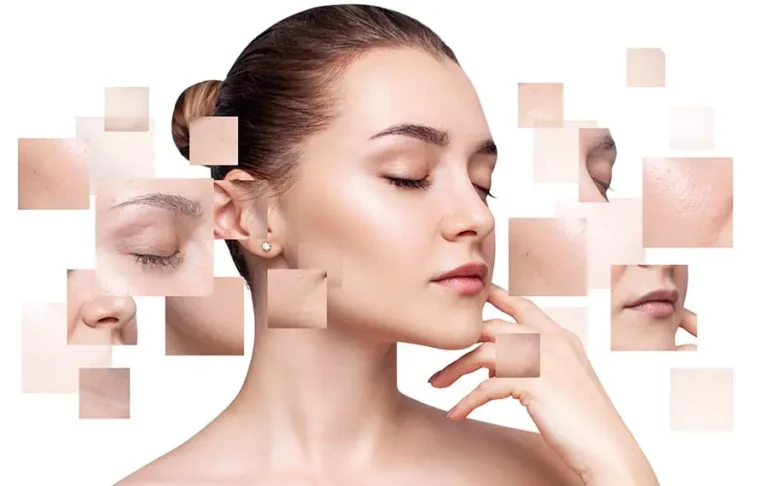
Scars can appear in many situations :
• Severe acne : a frequent cause of atrophic scars
• Surgery or medical procedures : incisions may leave visible marks
• Accidents or injuries : cuts, burns or trauma
• Stretch marks : resulting from excessive skin stretching (pregnancy, weight changes)
• Dermatological diseases : such as chickenpox or skin infections
Each scar is unique, which is why treatments must be personalized as well.
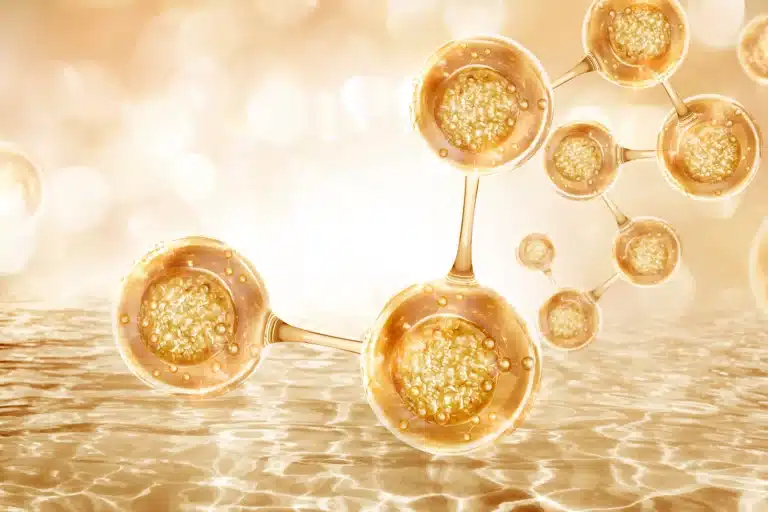
Healing is a complex process influenced by many internal and external factors. Understanding these elements helps anticipate results and optimize treatments for less visible scars.
• Age : younger patients generally heal faster due to higher collagen production, while mature skin may heal more slowly
• Genetics : some individuals are predisposed to hypertrophic or keloid scars
• Skin type : darker skin is more prone to pigmented scars, while lighter skin may be more sensitive to prolonged redness
• Location of the wound : areas under tension (knees, elbows) tend to heal less effectively
• General health : chronic diseases (diabetes, vascular insufficiency) or deficiencies (zinc, vitamins A and C) can delay healing
• Infections : a local infection can worsen the scar by disrupting the skin regeneration process
• Post-injury care : proper wound care (cleansing, hydration, protection) is essential for optimal healing
• Sun exposure : UV rays can cause hyperpigmentation of recent scars, making them more noticeable
• Smoking : smoking reduces tissue oxygenation, delaying healing
• Stress : chronic stress can disrupt the immune system and slow the skin repair process
Adopting the right habits and consulting a professional can help minimize these impacts and optimize healing.
Scars are classified according to their nature.
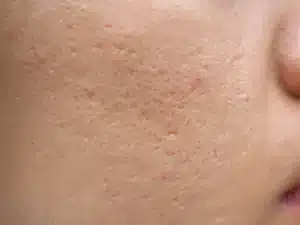
These are the most common types of scars. Due to a loss of dermal thickness at the site of the lesion, they appear as depressions in the skin’s surface. These scars do not improve on their own.
There are three types of atrophic scars, classified by shape, contour, and depth :
• Ice pick scars (V-Shaped).
• Boxcar scars (U-Shaped) with shallow, defined edges.
• Rolling scars (M-Shaped) with deep, undulating edges.
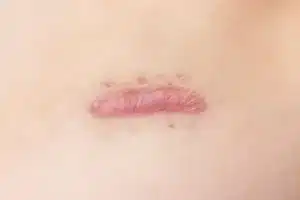
These raised lesions (less so than keloid scars) are red in color. Simple hypertrophic scars may disappear naturally within 12 to 18 months.
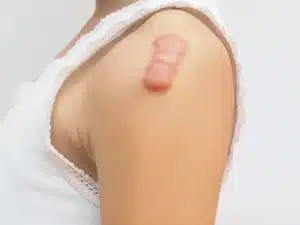
Keloid scars do not disappear spontaneously and are often associated with pain and/or itching. They appear as raised lesions, slightly colored (white, red, brown or pink). Their shape results from an abnormal proliferation of skin tissue.

These marks reflect a mode of healing of superficial inflammatory lesions. Erythematous macules often disappear within a few weeks without leaving marks, while pigmented macules fade more slowly and variably.
In medicine, several innovative techniques can reduce or remove a scar by significantly improving the skin’s appearance. These targeted treatments are adapted to each scar type and skin condition.
Among the most effective solutions :
• Medium chemical peels exfoliate the skin layers, stimulating cell renewal to reduce scars.
• Ablative lasers, whether continuous or fractional, are powerful tools that regenerate deep skin tissues, visibly improving old and deep scars.
• For atrophic scars, hyaluronic acid injections fill in the skin depressions for an immediate, though temporary, effect.
Each technique is personalized according to skin type, scar characteristics, and patient expectations, ensuring natural and lasting results.

Fractional ablative laser reduces the scar by stimulating collagen synthesis.
The skin tissues are heated and “columns” of skin are removed, which provokes the regeneration of a thicker dermis.
The number of required sessions varies between four and six.
The advantage of this technique is that it has relatively mild after-effects (a five-day social downtime is expected), but the improvement is less significant than that obtained with a medium or deep peel.
Dark marks, pigmented scars, are also reduced.
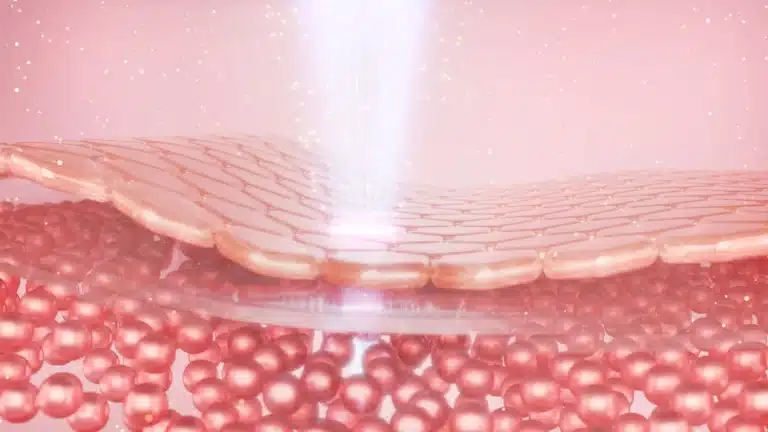
Continuous ablative laser, ideal for old and deep scars, is used to perform a laser peel. The goal is to eliminate the damaged layers of skin to stimulate collagen production.
This treatment, particularly effective on deep scars, can lead to a spectacular improvement reaching 80%-95%.
The after-effects include redness and scabbing for 10 to 14 days.
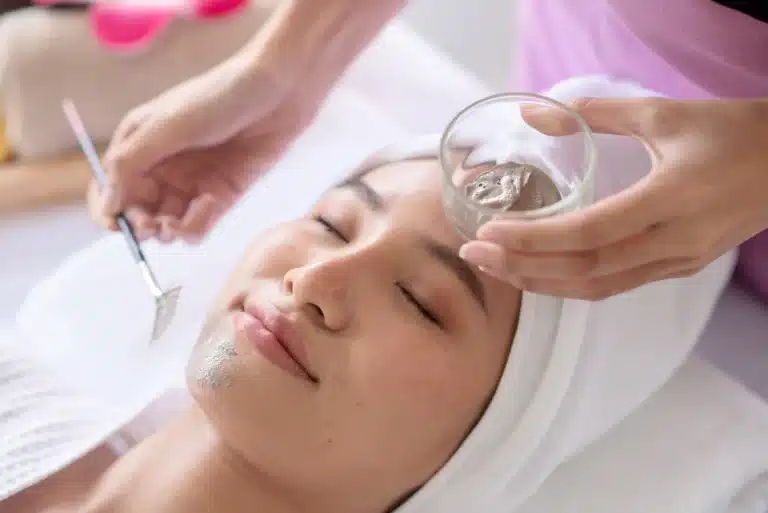
The medium peel works by exfoliating the superficial and middle layers of the skin using specific solutions.
The medium peel is a TCA peel (trichloroacetic acid) using a concentration of 20-25 or 30% TCA. Phenol is used for a deep peel.
By stimulating cellular regeneration, this treatment improves superficial to moderately deep scars, with reduction up to 80% depending on the skin and scar type, as well as improved Skin Radiance and tone.
This technique is ideal for acne or pigmented scars.
The after-effects are similar to those of a laser peel.
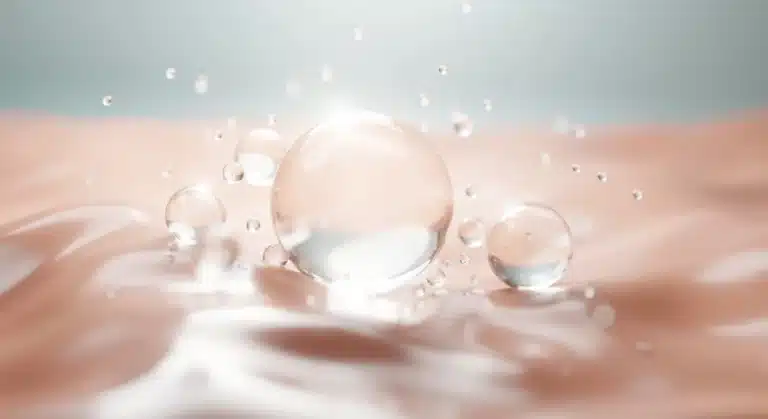
Hyaluronic acid has two indications :
• Treatment of an isolated atrophic scar which can sometimes (in cases where fibrosis is not extensive) be elevated thanks to the lifting properties of hyaluronic acid. Doctor Romano uses a medium cross-linked acid such as Restylane for this indication.
• Dermal densification. For this, Doctor Romano uses SkinBooster hyaluronic acid. Scars appear less visible on thicker, firmer skin.
During a prior consultation, doctor Romano listens to your expectations, assesses your needs, analyzes your skin and the type of scar, and advises you on possible treatments : laser or peel for scars.
A session lasts about 20 minutes, and the eyes are protected with ocular shields. The protocol includes 4 sessions at one-month intervals.
If you have a history of cold sores, antiviral treatment must begin the day before the session. One hour before the procedure, it is strongly recommended to apply the prescribed anesthetic cream to the area to be treated. This makes the procedure painless.
After the session, a healing cream must be applied twice a day for at least 10 days.
Before performing the peel, a local anesthetic is applied to make the procedure completely painless. The treated area is disinfected. Depending on the skin type and the desired goals, the number of passes and the application time of the peel vary. Immediately after application, the peel causes intense redness and whitening of the skin (frost). This phenomenon is completely normal.
Skin preparation should begin 3 weeks before the peel. Doctor Romano will indicate the most suitable cream for your skin. One month before the treatment, no self-tanning products, essential oils, scrubs, or masks should be used.
On the day of the peel, makeup and even the application of a cream are prohibited.
After the session, a healing cream is applied to the treated area. Antibiotics and acyclovir are prescribed.
The normal after-effects of the peel are : redness, swelling lasting 48 hours, then the skin turns brown and peels off within 7 days. Some complications may occur : swelling, persistent redness, flaking, exfoliation, bacterial or viral infection, acne flare-up.
For the peel, there are several contraindications :
• Diabetes or severe conditions such as renal or cardiac failure
• Pregnancy
• Wearing a pacemaker or cardiac defibrillator
• Treatment with isotretinoin stopped less than a year ago or ongoing acne treatment
• Skin infection or herpes
• Recent aesthetic procedure such as surgery, laser, dermabrasion
• Dark phototypes
• Contact skin allergies
For the laser, the post-session effects and side effects depend on the technique used and vary from a simple sensation of heat to more significant swelling and the appearance of scabs.
The first results are visible about one month after the treatment and are optimal between three and six months. This strongly depends on the treatment performed.
Doctor Romano informs you during the pre-procedure consultation that it is only an improvement, the degree of which depends on the type of scar and the skin.
The expected improvement rate is also announced during this consultation.
Scar treatments are intended for people who wish to :
• Reduce the visibility of acne, surgical or traumatic scars
• Smooth out irregular skin texture
• Diminish pigmented marks or persistent redness
• Gain confidence by achieving more even skin
• Significant improvement in skin appearance
• Non-invasive or minimally invasive techniques
• Natural stimulation of collagen production for lasting results
• Protocols adapted to each patient
The cost of treating a scar varies depending on the technique used, the type of scar, and the areas involved. Dr. Romano welcomes you to her clinic in Geneva for a diagnosis and a personalized quote.
Several approaches are available, including laser treatments, peels, and injections, with prices varying based on the chosen method. Scar treatment with laser or injection techniques relies on a personalized approach, adapted to the nature and location of the lesions.
Laser peeling is offered starting at 700 CHF per session, typically requiring only one session. Fractional ablative laser starts at 500 CHF per session. Medium or deep peels, depending on the indication, are offered starting at 700 CHF, also usually performed in a single session. In some cases, hyaluronic acid injections may be indicated, at a rate of 600 CHF per syringe.
Une cicatrice est considérée comme anormale lorsqu’elle présente une forme irrégulière, anomalies de taille ou est douloureuse. Cela inclut les cicatrices hypertrophiques (épaisses et rouges), les cicatrices chéloïdes (dépassant les bords de la plaie), et les cicatrices atrophiques (en creux). Ces cicatrices peuvent résulter d’une mauvaise cicatrisation ou d’une prédisposition génétique.
Although no product can completely erase a scar, some solutions can significantly reduce their appearance :
• Healing creams with silicone.
• Hyaluronic acid gels to improve texture.
• Retinoid creams to promote cell renewal.
• Plant oils (rosehip, vitamin E) to nourish and soften the skin.
To speed up scar fading :
• Moisturize daily with suitable creams.
• Use silicone dressings to promote proper healing.
• Protect the scar from the sun to prevent pigmentation.
• Perform gentle massages to soften the scar tissue.
• Consult a doctor for targeted treatments like laser therapy.
The most recommended creams include :
• Cicaplast Baume B5 (La Roche-Posay) for its repairing properties.
• Kelo-Cote silicone-based gel to smooth scars.
• Cicalfate (Avène) to soothe and regenerate the skin.
• Dermatix Ultra to reduce hypertrophic and keloid scars.
The choice depends on the type of scar and the healing stage.
A dermatologist and an aesthetic doctor are the specialists to consult to assess the scar and propose appropriate treatments. In some cases, a plastic surgeon may be required for more complex corrections.
Although natural methods are less effective than medical treatments, some may help :
• Apply rosehip oil or aloe vera regularly to nourish and soften the skin.
• Use gentle scrubs to stimulate cell renewal.
• Massage with honey, which has healing properties.
These methods have limited effectiveness.